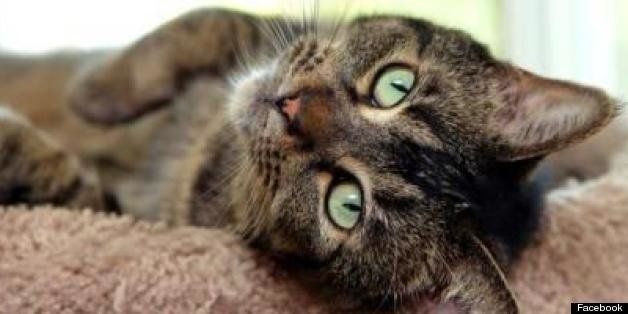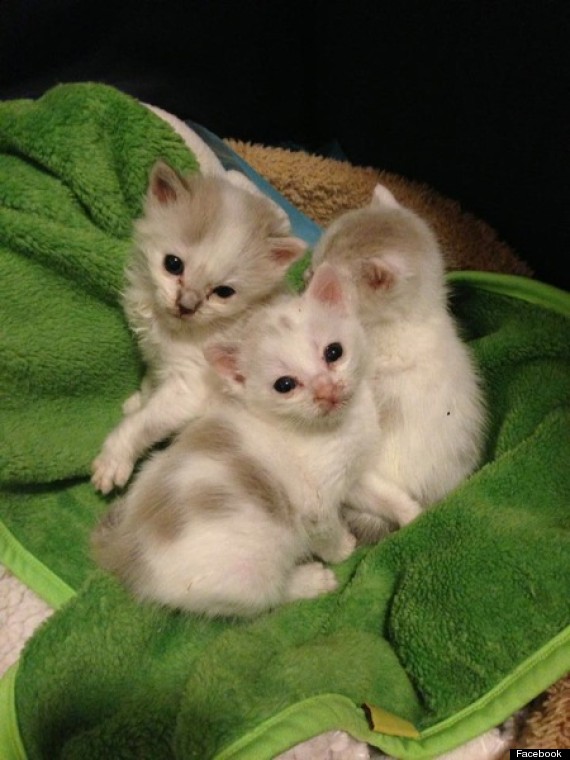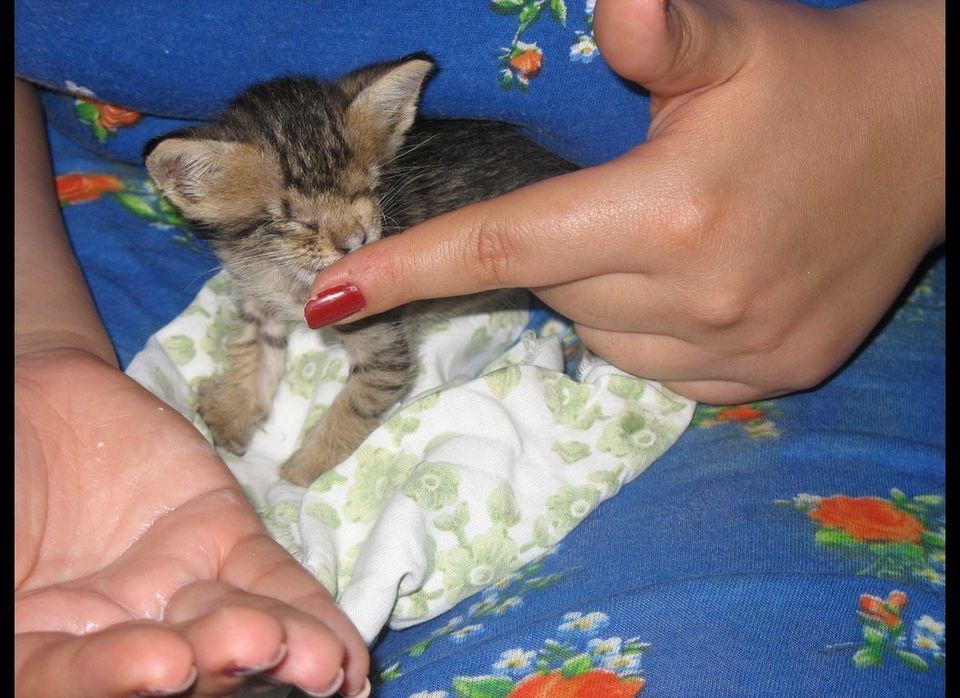
By Angela Lutz, Catster
To those involved in cat rescue, springtime means more than just sunshine, barbecues, and flowers. Warm weather also signals a spike in the births of feral and unwanted kittens. This annual baby boom has caused shelter workers and volunteers to dub April and May as the start of “kitten season.”
Kitten season might sound fun -- after all, there is nothing cuter than a fresh, fluffy, dewy eyed kitten. But life is hard for homeless cats, and many kittens who are abandoned or born on the street will not survive. Even those who end up at shelters do not have the best odds, as most facilities lack the staff and resources to care for bottle babies or special-needs kitties.
More From Catster:
Pretzel The Kitten Is Blind, Deformed And Inspiring People On Facebook
Deformed Front Legs Can't Stop Triumph The Kitty
Meet D'Artagnan, A Paraplegic Kitty Living Life To The Fullest
Thanks to Saving Grace Rescue, at-risk kittens in the San Francisco Bay Area have a place to go. For nearly 17 years, the nonprofit rescue group has given a second chance to homeless kittens, most of whom range in age from a few days to 8 weeks. The group fosters, socializes, and nurtures those who have run out of time and are in danger of being euthanized at more traditional shelters.
Over the years, the group has adopted out approximately 700 kittens. During kitten season, eight to 15 volunteers and foster parents care for nearly 20 kittens at a time.
Saving Grace founder Amber Holly says that finding enough fosters who can care for bottle babies and keeping up with the demand for supplies are among the greatest challenges of kitten season. Ensuring the kittens are adequately socialized and ready for adoption is also a crucial role of many volunteers.
“Providing the kittens with enough affection and socialization is an ongoing effort,” Holly says. “The primary job of many of the volunteers is to just play and cuddle with the kittens.”
Story continues after photo.
Fittingly, the inspiration behind the rescue was Holly’s first foster kitten, Grace. Grace was a bottle baby who had cerebellar hypoplasia, a neurological disorder that causes jerky movements, tremors, and a lack of coordination. It can lead to difficulty walking, especially when the cat is nervous or excited.
Sadly, Grace passed away earlier this year at age 17, but during her lifetime she instilled Holly with a desire to care for neonates and kittens with neurological disorders.
Grace also prompted Holly, who has a degree in zoology and is a registered veterinary technician, to adopt five special-needs cats as well as a partially deaf pit bull mix.
As a result of this dedication to special-needs pets, Saving Grace has rescued many kittens from extreme situations and conditions. One of Holly’s most memorable early rescues was a four-week-old orange tabby named Grendel. He arrived at emergency services with severe head trauma and broken ribs. His broken ribs created a condition known as flail chest, in which the ribs are free-floating due to the breaks, and a section of the chest actually caves in with each breath.
“Grendel and his litter had been beaten by a group of children,” Holly says. “Only Grendel survived, but he was in critical condition.”
Fortunately, rescue workers were able to treat Grendel's head trauma and construct a small splint for his chest out of a plastic sandwich container.
“Over the next few weeks, Grendel slowly recovered while he relearned how to eat and walk,” Holly says. “He recovered fully and became an adorable, happy little boy.”

The Saving Grace blog also tells the story of a kitten named Peter, who was born with severe Manx syndrome. This deformity left him without major nerve function from is sciatic nerve down, meaning Peter needed his bladder manually expressed at least three times a day. His back legs were also permanently bent like a rabbit’s, meaning he hopped rather than walked.
“One would think that a kitten with this condition would be uncomfortable and unhappy, but don’t tell Peter!” the blog reads. “Peter purrs and runs and hops with all the energy and excitement of a normal kitten ... he runs up and down stairs faster than his normal kitty counterparts. On a warm day, Peter is in the backyard digging in the dirt and chasing moths. Almost a normal life, except for his bladder expressions.”
Despite occasional “compassion fatigue,” Holly says the challenges of running a rescue are well worth the rewards, as Saving Grace improves the lives of cats and humans alike.
“The greatest rewards are, first, when a kitten relaxes and purrs the purr of feeling safe and warm, and second, when adopters send me happy updates with their new family member,” she says.
How can we help prevent kittens from experiencing homelessness in the first place and to make kitten season less of a catastrophic event for the cats and humans involved? Get your pets fixed, Holly says.
“Everyone can help with overpopulation by spaying and neutering their own pets, notifying feral fix groups when they see feral animals that need to be altered, and by volunteering at their local shelters and rescues,” Holly says.
All photos from the Saving Grace Rescue Facebook page.
